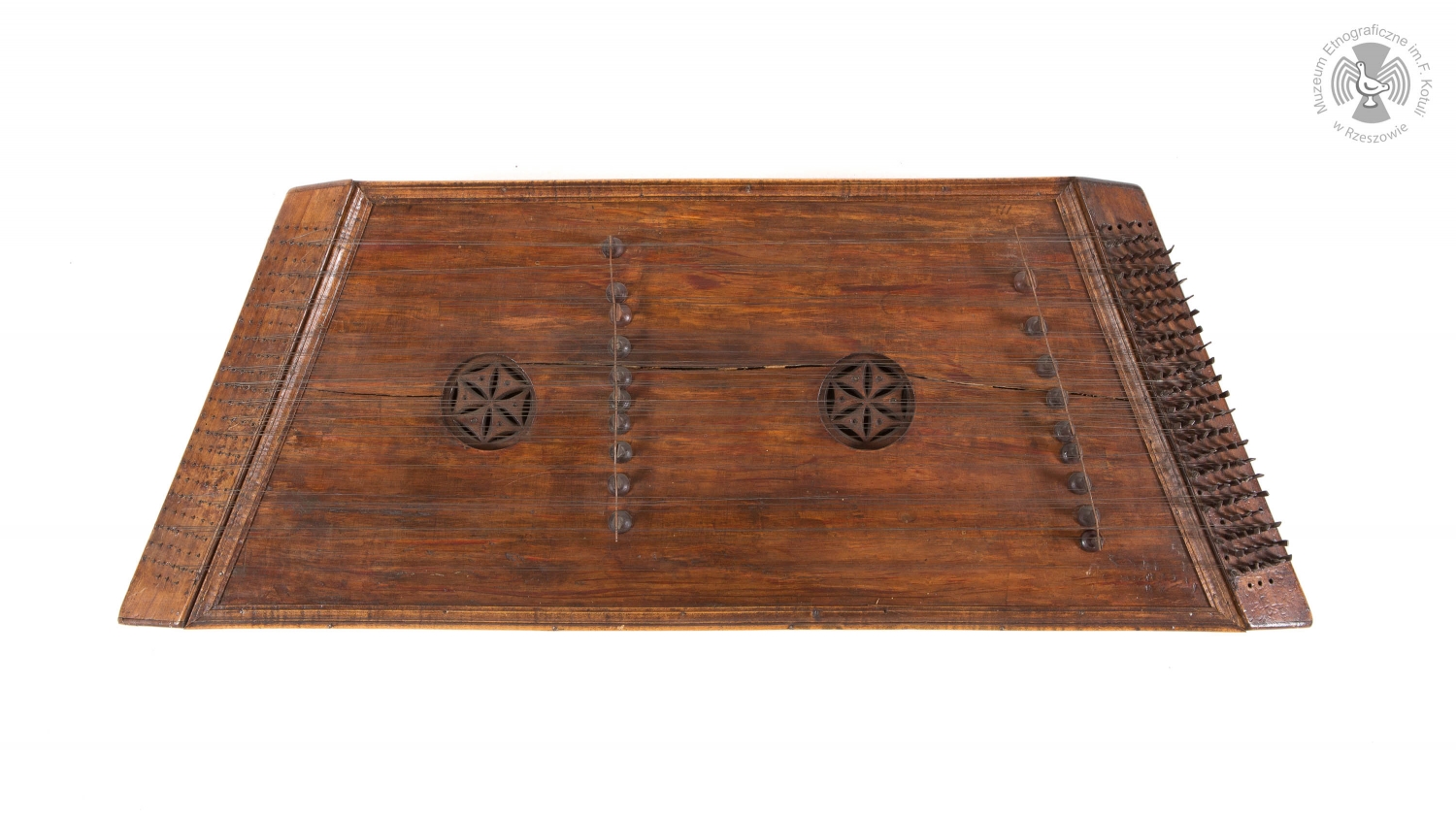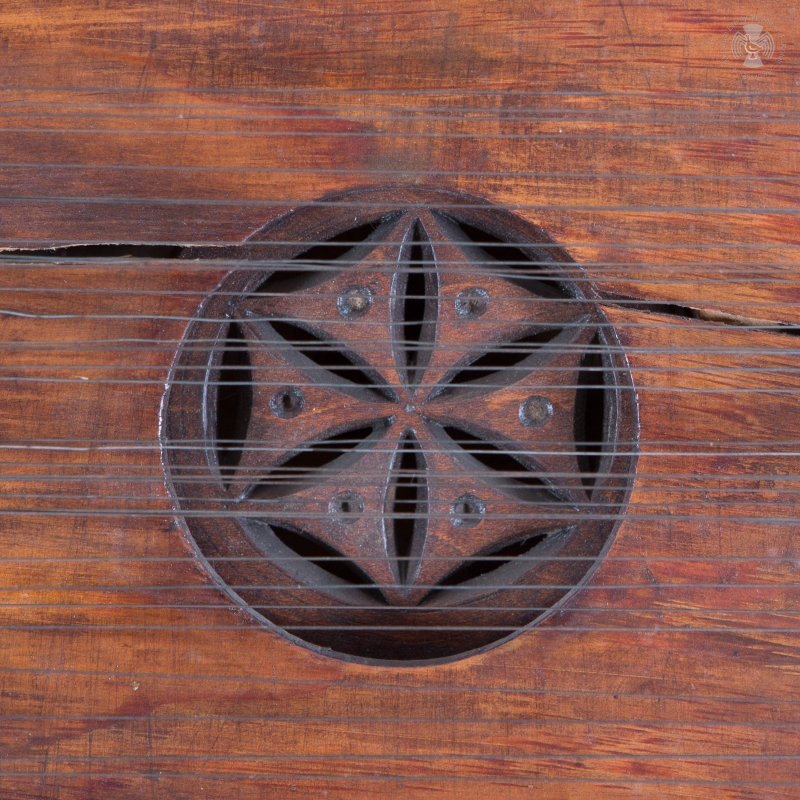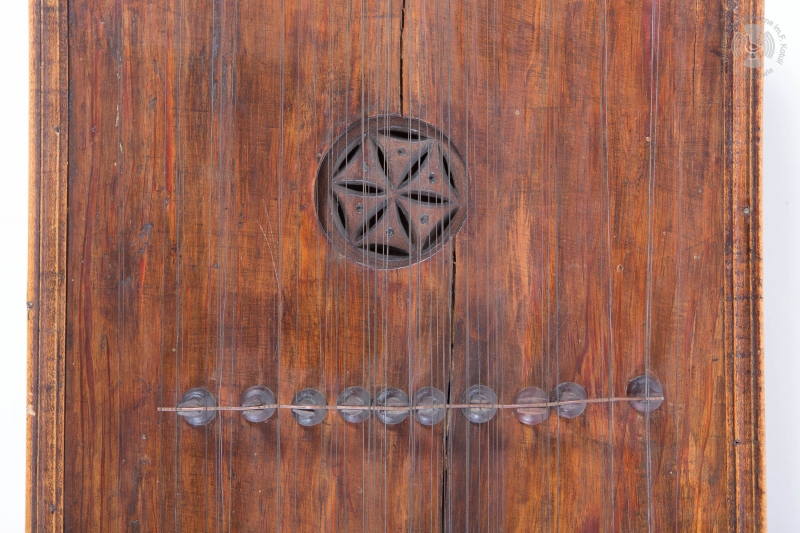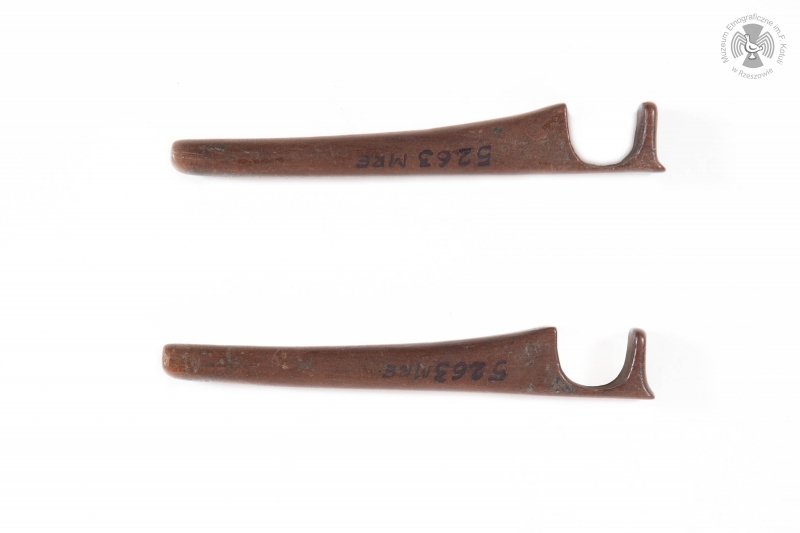dulcimer
Excerpt from the film Siła tradycji [The Power of Tradition], produced as part of the project "Muzyczny folklor Podkarpacia - badania terenowe" [The Musical Folklore of Subcarpathia - Field Studies], Franciszek Kotula Ethnographic Museum in Rzeszów, 2014
dulcimer
Classification: 3 Chordophones / 31 Simple chordophones or zithers / 314 Board zithers / 314.1 True board zithers / 314.12 With resonator / 314.122 With resonator box (box zither) / 314.122-4 True board zithers with resonator box (box zither) sounded by hammers or beatersMaker: Mucha Piotr
Date: ca 1914
Village / Town: Kąkolówka
Region: Subcarpathia
Country: Poland
Owner: Franciszek Kotula Ethnographic Museum in Rzeszów
Inventory number: MRE 5263
Description: body in a trapezoid shape with moulded sides and edges reinforced with wood; components glued together and then nailed together for reinforcement; strings stretched between metal hitches and pegs (for tuning); the number and placement of hitches and pegs indicate that the dulcimer was originally equipped with 23 string courses: 6 strings in each course, with the exception of the lowest course, which had three strings); on the resonance box, two rows of single, wooden bridges (originally 10 in each row), each with a metal bar attached on top; melody strings stretched interchangeably with bass strings; melodic strings divided by bridges in a 2:3 ratio, due to which their left sections are pitched a fifth higher than their right sections; undivided bass strings
Decoration: body coated with neutral varnish; two rosette-shaped resonance holes on the top plate
Measurements: 930 x 680 x 350 x 78 mm
Materials: wood (sycamore, pine), metal
Sound compass, tuning: variable, usually the lowest tone G – d, scale: from two (sometimes incomplete) to over four octaves
Performance practice: formerly an instrument of Jewish and Romany musicians, later folk musicians; it was played solo or in bands, particularly in the Vilnius area, Rzeszów area, and in Subcarpathia, where the dulcimer became the musical hallmark of the region after World War II; dulcimers from the eastern part of Lesser Poland are usually bigger and louder than those from the Vilnius area
Catalog card by: Jolanta Pękacz / Zbigniew J. Przerembski
<< Back















